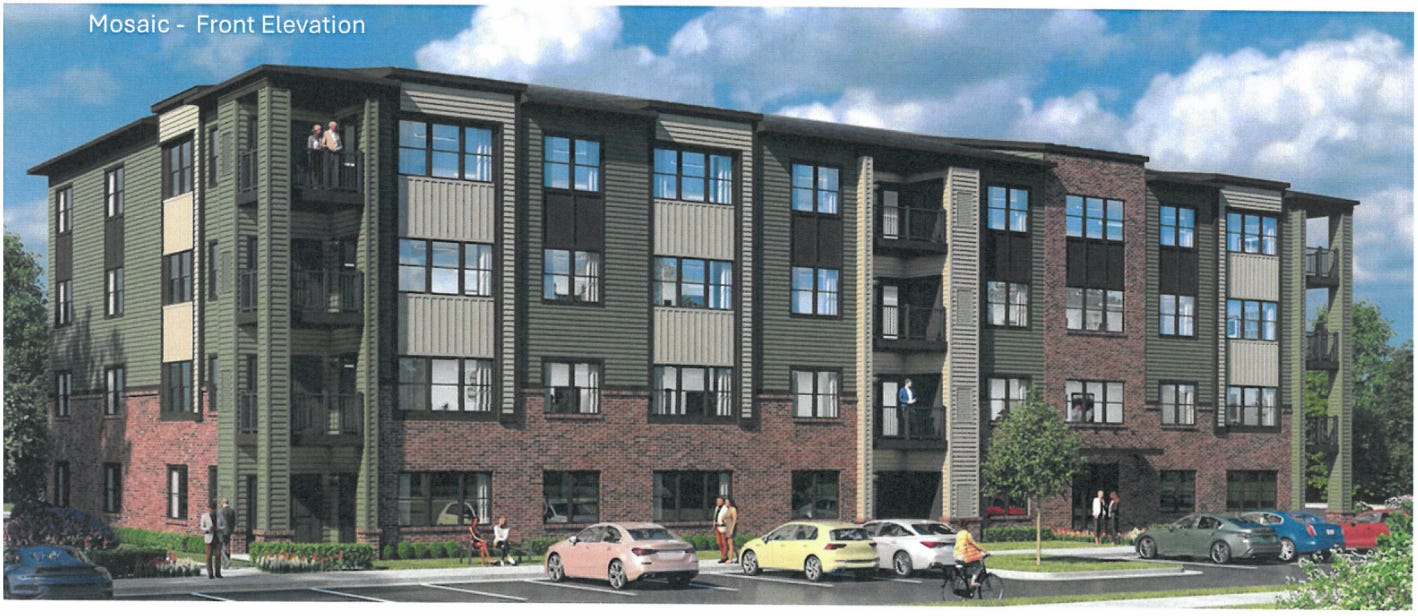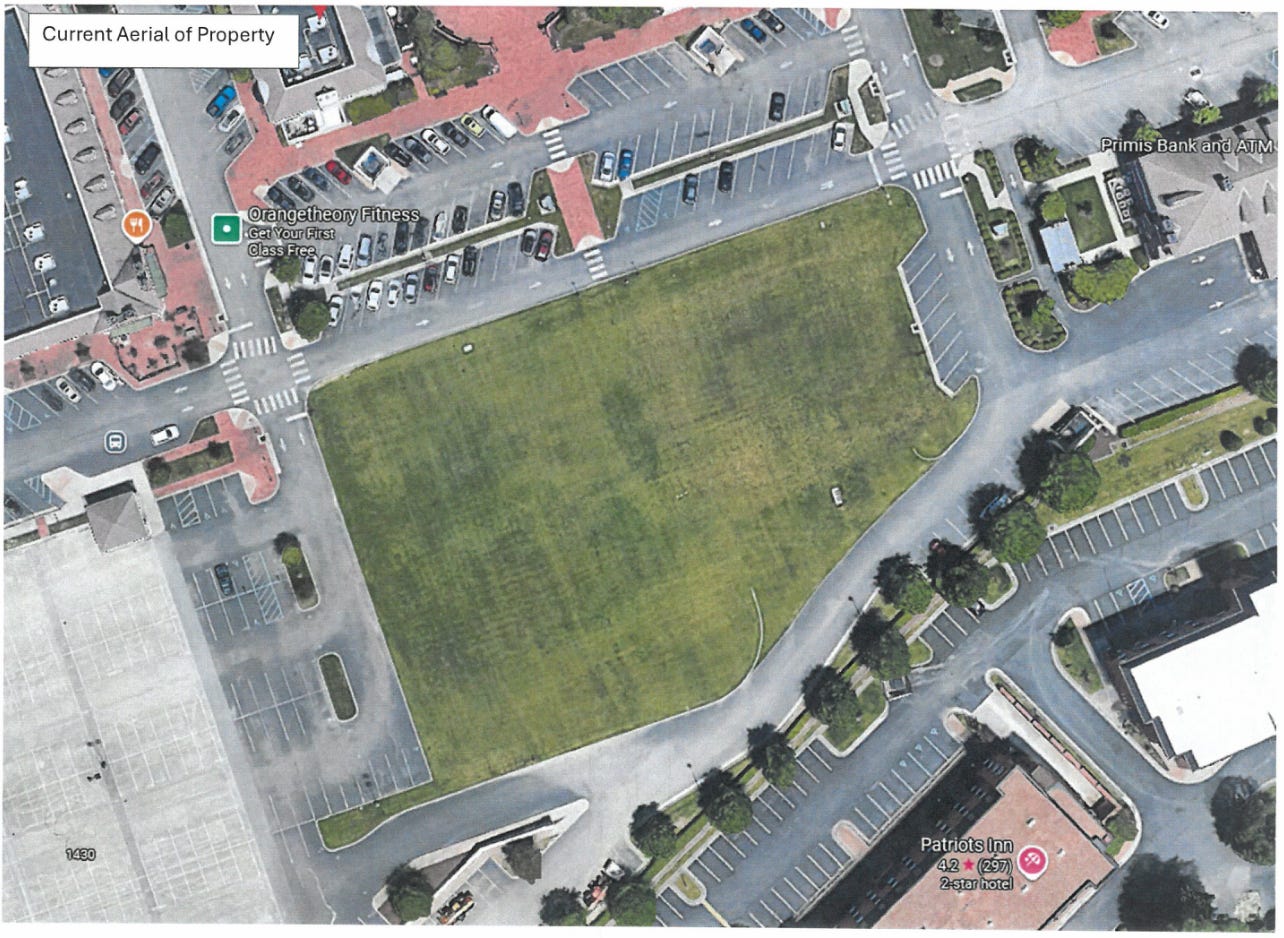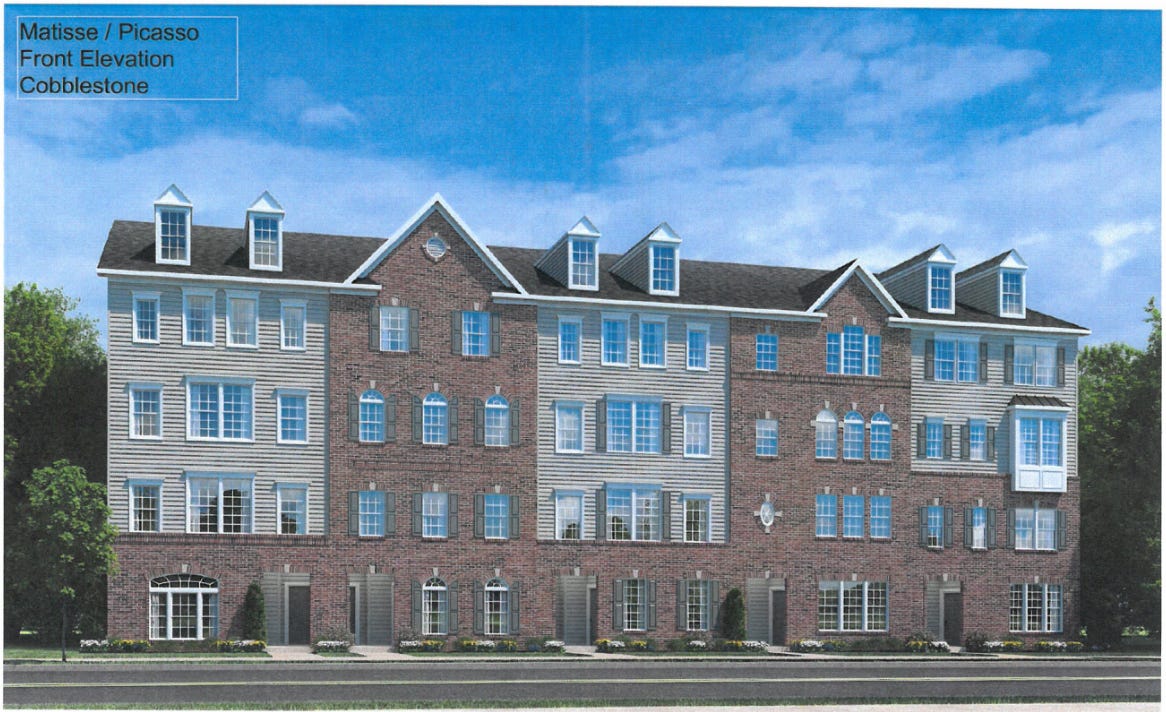Scaled-back High Street Condo Development Proposed in Williamsburg
New concept includes 58 for-sale units across three buildings; City Council voted down plan for 189 rental-units in 2024

Williamsburg’s Architectural Review Board (ARB) will provide a conceptual review of three new apartment buildings with a total of 58 condominiums at High Street. The proposal will be discussed at the ARB meeting Tuesday, August 26, though consideration will be limited to feedback on the architectural design. The Board’s final recommendation concerning the proposal will come at a later date once their feedback is incorporated. Future rezoning or land-use approvals related to the project will be considered by the Planning Commission, with a final decision made by the City Council.
In the past, residential development within High Street has been a contentious subject. In May 2024, City Council narrowly voted down a proposal to rezone two parcels at High Street to allow 189 multifamily units. That project, opposed by staff and the Planning Commission, raised concerns about density, parking, and alignment with the city’s comprehensive plan. The new 58-unit proposal is considerably smaller in scale and would occupy only a portion of the land previously considered for development.

Plans call for two “Mosaic” buildings, each four stories tall with 24 units and elevator access, and a third four-story building, the “Matisse/Picasso,” with 10 units. Together, they would provide 58 for-sale condominiums, with parking to rely on existing street spaces within High Street. Exterior materials described in the application include cementitious siding in earth tones, brick foundations, architectural shingle roofs, and a mix of black or white trim depending on building type. Detailed specifications, staff noted, have not yet been provided.
Because the site falls within the Corridor Protection–Commercial district, planning staff emphasized that construction should enhance the visual character of the Richmond Road approach into Williamsburg and complement nearby styles. New architecture, they wrote, should not replicate historic forms but be “an evolution of and compatible with Williamsburg’s design traditions.” Key design factors cited include façade proportions, roof shapes, continuity of the streetscape, and material quality.
A Williamsburg Independent contributor used AI tools and the following sources:



